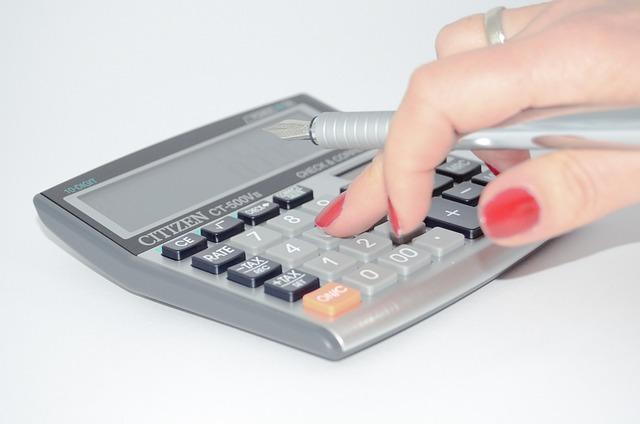Achieving weight loss goals requires a strategic approach that goes beyond merely stepping on a scale. Understanding your body composition is crucial for crafting an effective and sustainable plan. Enter the body fat calculator—a powerful tool that provides insights into the percentage of fat in your body, helping you tailor your diet and exercise regimen more precisely. In this article, we will guide you through the process of using a body fat calculator to not only track your progress but also optimize your weight loss journey. By leveraging this tool, you can set realistic targets, monitor changes accurately, and make informed decisions that align with your personal health objectives. Let’s explore how to harness the potential of a body fat calculator to transform your weight loss aspirations into achievable milestones.
Understanding Body Fat Calculators and Their Role in Weight Management
Body fat calculators are invaluable tools in your weight management journey, offering a more comprehensive insight into your health than the scale alone. These calculators work by estimating the percentage of your body weight that comes from fat, providing a clearer picture of your body composition. Understanding your body fat percentage can help tailor your fitness and nutrition plans more effectively, ensuring you’re losing fat rather than muscle. Utilizing a body fat calculator can help you set realistic goals and track progress, making it easier to stay motivated and focused.
- Track Progress: Regularly measuring your body fat percentage can help you monitor changes in your body composition, ensuring your efforts are leading to fat loss rather than just weight loss.
- Set Realistic Goals: By knowing your current body fat percentage, you can set achievable targets that align with your health and fitness objectives.
- Personalized Plans: With a clear understanding of your body fat, you can customize your workout and diet plans to suit your specific needs, maximizing the effectiveness of your weight management strategy.
Choosing the Right Body Fat Calculator for Accurate Results
When it comes to measuring body fat, the plethora of calculators available online can make the task daunting. To ensure you’re getting the most accurate results, it’s crucial to choose a calculator that fits your specific needs. Precision is key, so look for calculators that are backed by scientific methods such as the Jackson & Pollock 7-site skinfold test or the US Navy Method. These methods incorporate multiple data points, offering a more comprehensive analysis of your body composition.
- Consider Your Goals: Whether you’re aiming for weight loss, muscle gain, or maintenance, choose a calculator that aligns with your objectives.
- Ease of Use: Opt for a user-friendly interface that simplifies the input process without sacrificing accuracy.
- Customization Options: The best calculators allow you to input detailed information such as age, gender, and activity level for tailored results.
Ultimately, selecting the right tool is about finding a balance between accuracy and convenience. By investing a little time in research, you can identify a body fat calculator that not only fits seamlessly into your fitness routine but also enhances your journey towards achieving your health goals.
Interpreting Body Fat Calculator Readings to Inform Your Weight Loss Strategy
Understanding the readings from a body fat calculator is crucial for tailoring a weight loss plan that aligns with your personal health goals. A body fat calculator provides a percentage that represents how much of your body weight is composed of fat. This number is more insightful than just tracking weight alone because it differentiates between fat and muscle mass. Here’s how to interpret these readings to craft an effective strategy:
- Evaluate Your Current Status: Compare your body fat percentage against standard health charts to determine whether you’re within a healthy range. This helps you set realistic goals based on where you currently stand.
- Set Specific Targets: Use the readings to define clear, measurable objectives. For instance, aim to reduce your body fat percentage by a specific amount rather than just losing a certain number of pounds.
- Adjust Your Diet and Exercise: Tailor your nutrition and workout plans to focus on fat loss rather than just weight loss. This might include incorporating strength training to preserve muscle mass while reducing calorie intake to target fat reduction.
By focusing on body fat percentage, you’re not just aiming for a lower number on the scale but striving for a healthier body composition, ensuring that your weight loss journey enhances your overall well-being.
Implementing Body Fat Measurements into Your Personalized Fitness Plan
Integrating body fat measurements into your fitness plan can dramatically enhance the precision and effectiveness of your weight loss journey. Understanding your body composition is crucial because it gives you insight into how much of your body weight is fat versus lean mass. By regularly monitoring these metrics, you can tailor your workouts and nutrition plan to more effectively target fat loss while preserving muscle mass.
Here’s how to get started:
- Choose a Reliable Calculator: Opt for a body fat calculator that uses methods such as skinfold measurements, bioelectrical impedance, or DEXA scans for accuracy.
- Set Specific Goals: Use your body fat percentage as a baseline to set realistic and measurable goals. Aim for gradual changes rather than drastic reductions to ensure sustainability.
- Adjust Your Plan: Based on your body fat measurements, modify your caloric intake and workout regimen. Increase protein intake to support muscle retention and incorporate both cardio and strength training.
- Track Progress: Regularly update your body fat percentage to assess the effectiveness of your plan. Use this data to make informed adjustments and stay motivated.
